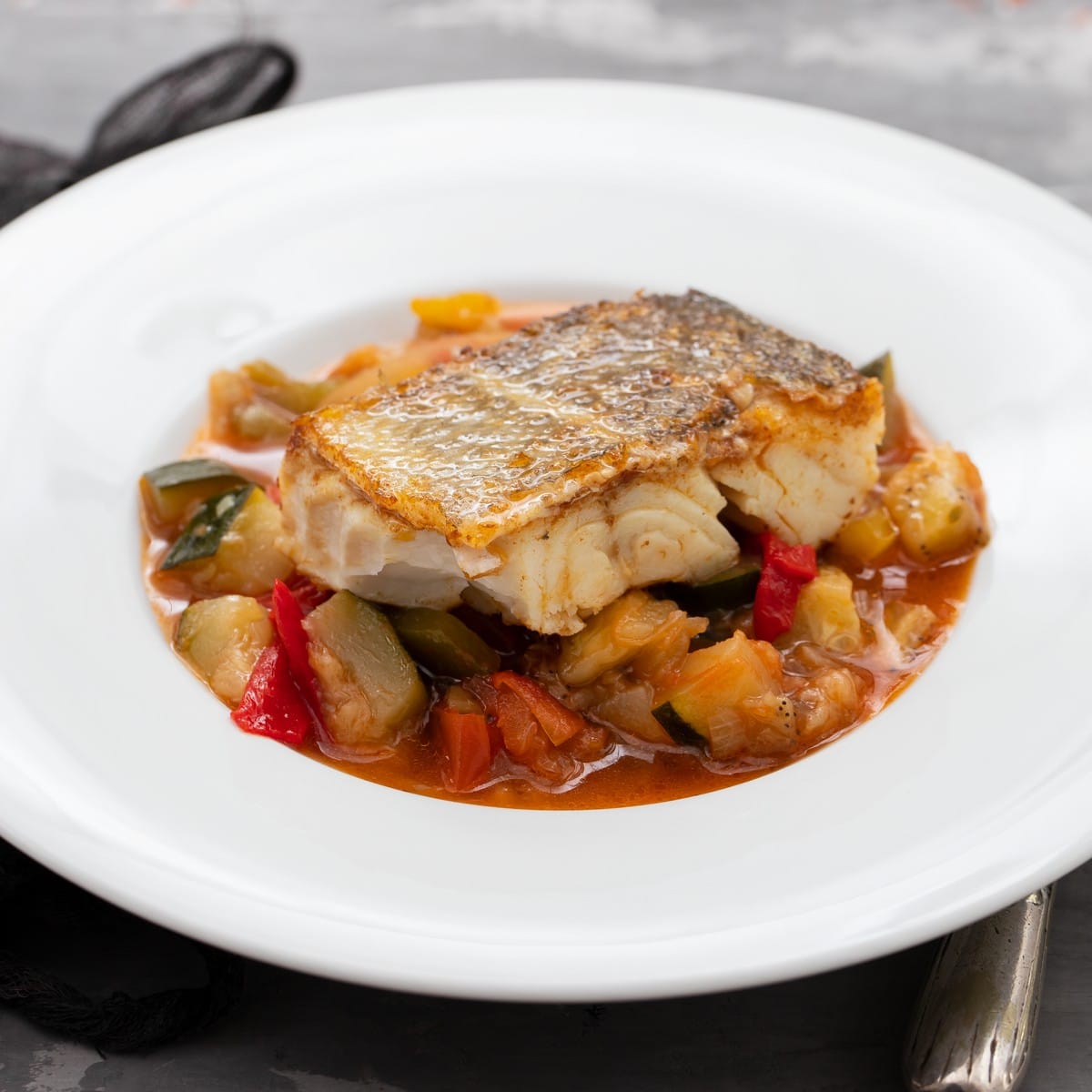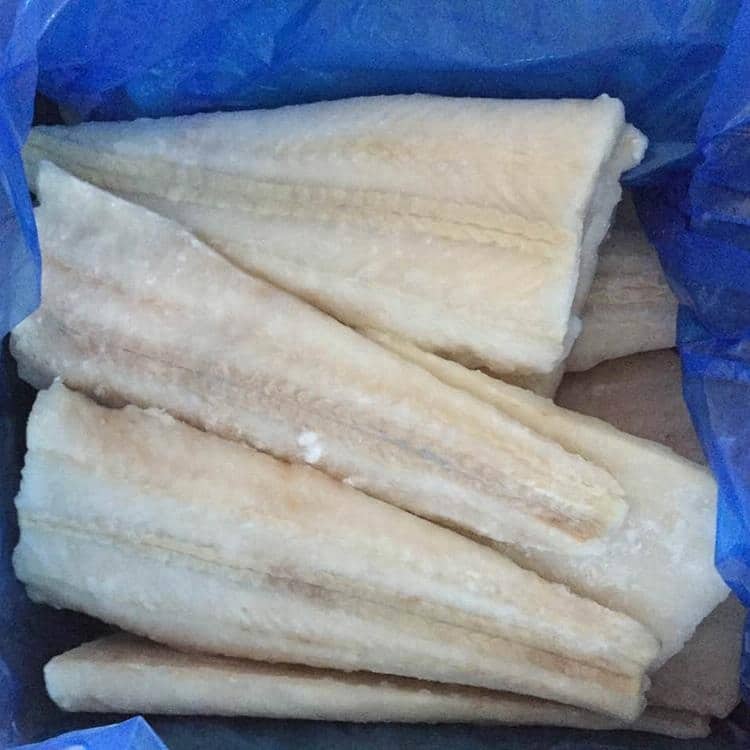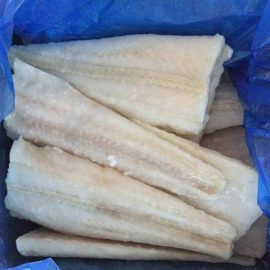
Introduction
Hoki is an important commercial species due to its abundance, large size, excellent taste and versatility. Its flesh is highly valued for its white and flaky texture and delicate flavour and can be cooked in various ways.
Hoki is increasingly used to make healthy and sustainable fish products such as fish fingers and burgers.
Their fishing is strictly regulated and monitored by the Commission for the Conservation of Antarctic Marine Living Resources to ensure that the species is kept sustainable for future generations.
Description
Hoki (Macruronus novaezelandiae) is a marine fish belonging to the family Macrouridae. It is a species native to the Southern Hemisphere’s oceans, and its range extends from the tip of southern South America to the northwestern portion of New Zealand’s South Island. Hoki is also known as blue grenadier, New Zealand whiptail, blue hake, or whiptail hake.
It is a large, white-fleshed fish that is mild-tasting, low in fat, and offers a delicate, mild flavour that makes it an international favourite among seafood lovers.
The life cycle of Hoki is closely linked to the biology of other species in their environment, making them a vital species in preserving the health and balance of the Southern Ocean.
Physical Characteristics
Hoki has a long, slender body shape and slightly flat head, with three prominent dorsal fins and a small ventral fin near their caudal fin. Their eyes are large, somewhat visible, and characterised by the three barbels on both the upper and lower jaws.
They can reach lengths of up to 1.2 meters and can live for up to 20 years. Hoki is bottom feeders and can survive in depths of 200 meters.
The dorsal part of their bodies is predominantly blue-green, while their silvery-white bellies add to its striking patterning.
Males and females differ not just in size, with females usually bigger and darker than the males, but also in terms of their behaviour and colouration during the spawning season. Males often possess brighter colouration on their heads, and females can exhibit a more rounded body shape.
Habitat
Hoki is a demersal (deep-sea) fish that lives mainly in the southern hemisphere and is rarely found at depths greater than 200 meters.
It is migratory, forming large schools that travel together over long distances in search of food or to find suitable spawning grounds. These schools can often be seen in near-surface waters during the summer, where the white fish will feed to sustain them during their annual migration.
Distribution and Abundance
Hoki is a widespread pelagic fish, extending across the Indian Oceans, Pacific and Atlantic coasts.
It is particularly abundant in the colder seas around the South Island of New Zealand and as far north as off the east coast of Scotland and the west coast of Japan.
In New Zealand, Hoki is widely distributed throughout coastal waters as far north as the North Island, with smaller populations in Tasmania and sub-Antarctic islands of the Indian Ocean.
Hoki Fisheries
Known widely as a valuable commercial species, Hoki supports local, national, and international seafood markets with its presence in New Zealand and Patagonia. In New Zealand, Hoki is the second most paramount seafood species, with commercial fishing becoming prevalent in the 1950s. The New Zealand fishery is controlled and monitored by the Ministry for Primary Industries (MPI) under the Quota Management System (QMS), with a total allowable commercial catch (TACC) of 2,770 tons per annum since 2018. Similarly, the Patagonian Hoki is relevant to the local fishing industry, with a catch ranging from 500-800 tons per year. Its management is conducted under a national plan alongside the regional Plan de Manejo Pesquera Patagnico (PMPP).

PMPP outlines fishing activities and management measures such as catch limits, fishing closures, harvest levels, and technological advances. The Patagonian Fishery also utilises a vessel monitoring system (VMS) to ensure the proper implementation of measures.
Population and Conservation
In recent years, concerted efforts have been made to ensure the sustainability of the Hoki fishery, with measures such as seasonal closures, bycatch limits, and size restrictions all being implemented. Fortunately, due to the efficacy of these tactics, the Hoki population has been rapidly recovering from overfishing in the early 2000s. It is set to continue to play an essential role in New Zealand’s fishing culture.
Conservation Status
In the early 2000s, a call to reduce the number of Hoki caught in bottom trawling nets led to the introduction of various conservation measures and regulations. These regulations included limits on net size, gear type, catch composition, and restrictions on recreational fishing. In recent years, the species has also been farmed in some countries, in addition to being wild-caught.
As a result of the improved management and conservation efforts, the presence of Hoki in the wild has levelled off, and it is now considered stable and capable of producing sustainable catches.
Sustainability
Hoki is sustainably caught, as it is abundant in different parts of the world and has a better reproductive rate than other commonly found fish. It has also been certified sustainable by the Marine Stewardship Council and rated ‘Good Alternative’ by the Australian Fisheries Management Authority. As such, it is considered a responsible seafood choice and quickly becomes a go-to choice for a healthy fish alternative.
Hoki’s Diet
Hoki is an opportunistic feeder and will feed on a wide variety of both marine and benthic prey items, depending on their availability in the area. Crustaceans, small fish such as anchovies, sardines, eels, squid, benthic invertebrates, krill, jellyfish, and fish eggs are all prey items that Hoki are known to consume.
Additionally, Hoki may consume smaller amounts of phytoplankton, usually while feeding on krill or jellyfish.
Hoki can hunt both during the day and under cover of darkness by utilising their sharp eyesight and sensitive hearing to locate prey. Generally, they feed on the bottom of the ocean bed, searching for food amongst the sand, rocks, and other debris.
Reproduction & Life Cycle
Fertilisation occurs externally in Hoki, wherein females lay their eggs in the open water, and males follow to release sperm to fertilise them. After 12-18 days in the pelagic phase, the larvae of the Hoki will settle into shallow coastal waters, where they will feed on zooplankton and slowly grow until adulthood is reached.
During the adult phase, Hoki will typically migrate along certain routes in order to spawn, though the specific courses taken may change annually depending on environmental factors.
Reproduction in Hoki depends heavily on environmental and seasonal considerations. In the Southern Hemisphere, spawning typically occurs between January and April, with the highest spawning activity occurring naturally at water temperatures between seven and eleven degrees Celsius. In the Northern Hemisphere, the spawning season typically runs from August to October.
Hoki has a relatively long life span and can reach lengths of up to 112 cm, weighing a maximum of 17 kilograms. The average lifespan of a Hoki is 8 to 10 years, with their importance to commercial fishing industry being highly valued.
Origin and Etymology
Hoki (Mori: Toki) is the name of two species of deepwater fish found in New Zealand, Macruronus novaezelandiae and Dissostichus eleginoides. It is also commonly referred to as Blue cod, a reference to its distinctively blue colouration and its popularity amongst recreational and commercial fishers.
The term is an anglicised version of the Maori word toki and is related to the term otcihok from the Mikmaq language of Eastern Canada, which means to hop. Its scientific name is Merluccius australis, derived from the Latin terms merlucius (for its shape) and australis (for its southern hemisphere distribution).
Significance
Due to its thriving fisheries, Hoki has become an essential part of the fishing industry in New Zealand and Southern Australia, contributing to both economies and cultures.
Hoki is also an intrinsic part of Maori culture, where it is viewed as a kaitiaki, or guardian, of the sea. This admiration has led to special protection and conservation efforts in its homelands, which includes Marine Protected Areas and sustainability initiatives.
Uses
Hoki (also known as blue grenadier or whiptail) is a popular kosher fish used in many cuisines around the world. It is an ideal fish for a wide range of dishes, from pan-fried fillets to soups and pasta. Among the many things you can prepare with it are poached fillets, fish cakes, fish sandwiches, the famous Thai dish pla noo nung, Indian coconut curry, Cajun-style from the south of the United States, cornflake crusted fish tacos with Hoki, sashimi, sushi, and ceviche.
Its mild flavour and delicate texture make it an excellent substitute for white-fleshed fish, such as cod and haddock.
Nutritional Content
Hoki is an oily fish providing great nutritional content. It is packed with protein and low in saturated fats, making it a much healthier alternative to most other whitefish. Nutritionally, it can provide vitamins A, D, E and B12 and minerals such as calcium, phosphorus, and selenium.
Additionally, Hoki offers Omega-3 fatty acids, albeit lower than other fish, such as Salmon. It is also lower in calories, fat, and saturated fat than other commonly consumed fish.
Hoki is a fantastic health-boosting choice that fits perfectly into even the most health-conscious diets.
Versatility
Hoki is known for its mild flavour and soft meaty flesh, making it approachable to various palates. Its mildness allows it to be cooked in several recipes, from fritters to grilled skinless fillets. It is also low in price, making it an affordable alternative.
Taste and Texture
Hoki has a mild, sweet taste similar to white-fleshed fish like cod and haddock. Frozen Hoki flesh is white, flaky and relatively tender when cooked, and its mild, sweet and nutty flavour pairs well with subtle seasoning and sauces.
It is milder in flavour than other cod varieties, making it an ideal choice for those who may not enjoy the more robust flavours of some fish.

Cooking Hoki
Popular cooking methods for Hoki include baking, pan-frying, steaming, and stir-frying.
When baking and pan-frying, brush the fillets with oil and season with salt, pepper, herbs, and spices – including lemon slices to enhance flavour.
When steaming, vegetables can be added to the steamer basket or placed on the bottom of a pan with a few inches of boiling water and the Hoki fillets placed on top.
For a stir-fry, the vegetables should be added first, followed by Hoki, and cooked for a few minutes on high heat until cooked. Hoki should not be overcooked to preserve its delicate flavour.
Side Dish Perfection
To ensure the best flavour and enhance the delicate taste of Hoki, it is essential to choose sides that will bring out its best flavours. Light sauces, dressings and seasonings should be used to preserve this fish’s light, delicate taste.
Popular side dishes for Hoki include steamed or grilled artichokes, roasted red peppers, ratatouille, boiled new potatoes, sauteed mushrooms, grilled corn salsa, grilled asparagus, and roasted Brussels sprouts.
Roasted vegetables such as bell peppers, carrots, and sweet potatoes are a great way to bring sweetness and savoury elements to the dish, while leafy greens, such as kale and spinach, provide plenty of fibre and essential vitamins and minerals.
Wild rice, quinoa, and other whole grains add a nutty flavour and an added texture. Meanwhile, steamed vegetables like broccoli, asparagus, and green beans serve as light, healthy accompaniments.
Furthermore, adding light vinaigrette dressings to the dish will provide flavour and extra nutrition.
These side dishes are a great way to provide balance and nutrition to any meal featuring Hoki. It is a versatile and delicious fish that can be enjoyed in many different ways. By pairing it with light and healthy side dishes, Hoki can become a nutritious and delicious part of any lifestyle.
Popular Recipes
The range of recipes with Hoki is vast, offering endless possibilities for cooks to explore.
Popular Hoki recipes include pan-fried Hoki, Hoki mornay, beer battered Hoki, Hoki and vegetable fritters, Hoki fishcakes, Hoki fish bourguignon, garlic and herb crumbed Hoki, Hoki pizza, Hoki and lemon bake, Hoki and corn chowder, roasted Hoki with thyme, garlic butter and lemon, pan-fried Hoki with salted lemon and caper berre, tempura Hoki with wasabi mayonnaise, Hoki nuggets and Hoki in coconut cream.
Regional variations include grilled Hoki with chilli salsa in South Wales, Australia, New Zealander flavour steamed Hoki with herbs, and India has tandoori Hoki kebab.
Cultural Significance
Hoki is an integral part of the sea-faring culture that dominates the coasts of New Zealand. Not only is it a delicious source of food, but it also offers jobs, economic opportunities, and a sustainable and healthy source of nutrition. Its Omega-3 fatty acid content makes it one of the most nutrient-dense seafood items in the New Zealand diet.
Conclusion
Overall, Hoki is an important food source that provides essential health benefits and plays a critical role in many countries’ culture, economy, and environment, especially in New Zealand and Australia. Its low levels of pollutants and contaminants make it a safe and nutritious fish to consume in moderation, combined with other types of fish.
